Building a 1924 Roster in C&Sn3
12


















12
|
This post was updated on .
I have to admit, I'm enjoying this retirement thing! After a couple of months of sleeping every night in my own bed and establishing a daily routine, I'm finding that I have 1-2 hours per day to do some C&S model building. I've about fine tuned my trackplan for my Sn3 Breckenridge layout in my shop. I hope to start bench work later this summer.
Since I can never decide which C&S era that I like the best, I've decided that it will always the second week of June in the year 1901 . . . or 1909 . . . or 1924. So, I'm going to need to assemble locomotive and rolling stock rosters for each era. Last year, the proceeds of my Premortem Estate Sale at the Sn3 Symposium, went to the purchase of a pair of Sn3 C&S Brooks 2-8-0's, C&S 75 and 76. (See http://c-sng-discussion-forum.41377.n7.nabble.com/Joining-the-quot-Band-of-Brooks-Brothers-quot-in-Sn3-td13868.html#a14770. Since the PBL locomotives are factory painted, ready to run with DCC / sound installed, it makes sense to concentrate on a 1924 roster first, until I have caught up with finishing some locomotives for the other eras. I will need equipment for testing as track laying proceeds. Why 1924? It was the last full year that the D&RGW 3rd rail was still in place between Salida and Leadville. I want to include some D&RGW interchange consigned to C&S destinations, that Pat Student's research has demonstrated to have existed. Also, there was an up tic in through traffic to Climax, as molybdenum prices, which crashed with the 1918 WW1 armistice, began to rise, causing a new flurry of operation and expansion of the Fremont Pass operations. And photos of Breckenridge in the 1920's still show a significant number of freight cars in the yard, suggesting local switching and business. By the 1930's Breckenridge was pretty much deserted, just a stop for the through freights to Leadville. I've opened this thread as a bookmark to post photos of my 1924 models, as I complete them. I'll do similar threads for 1901 and 1909.
Jim Courtney
Poulsbo, WA |
Re: Building a 1924 Roster in C&Sn3: Reefer 1105
|
This post was updated on .
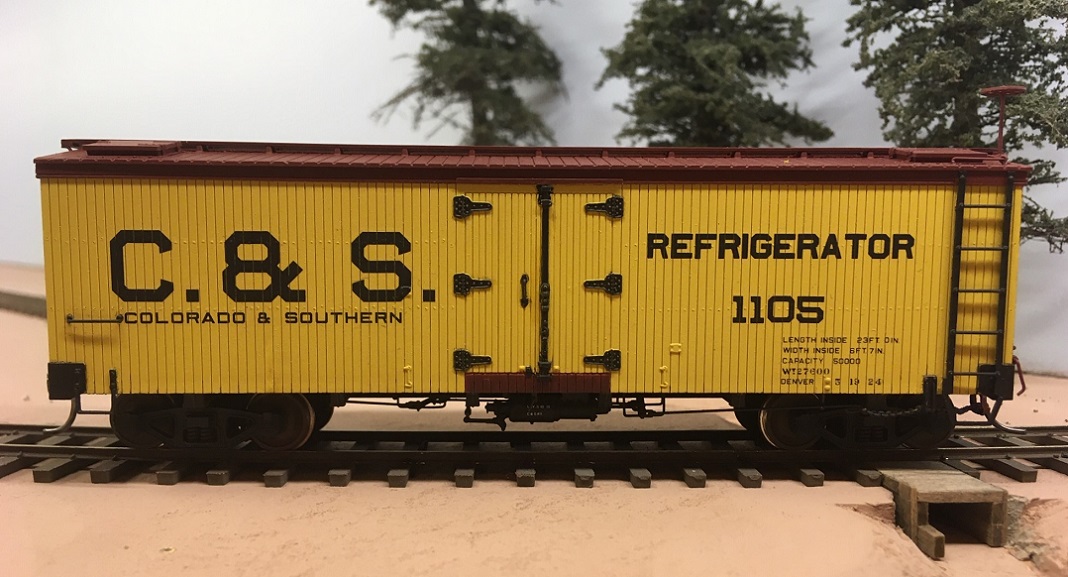 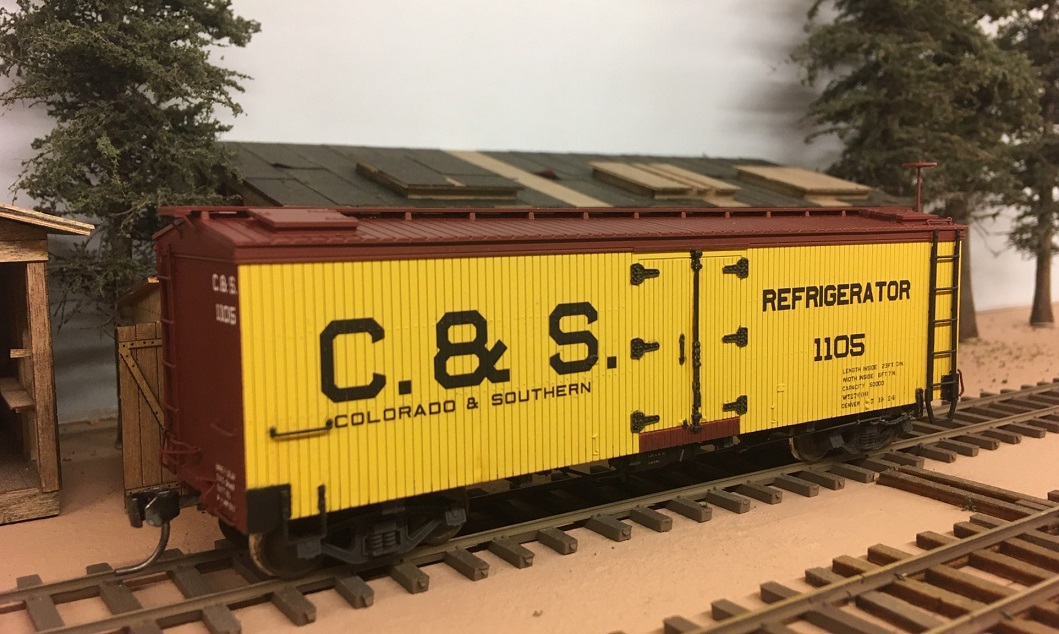 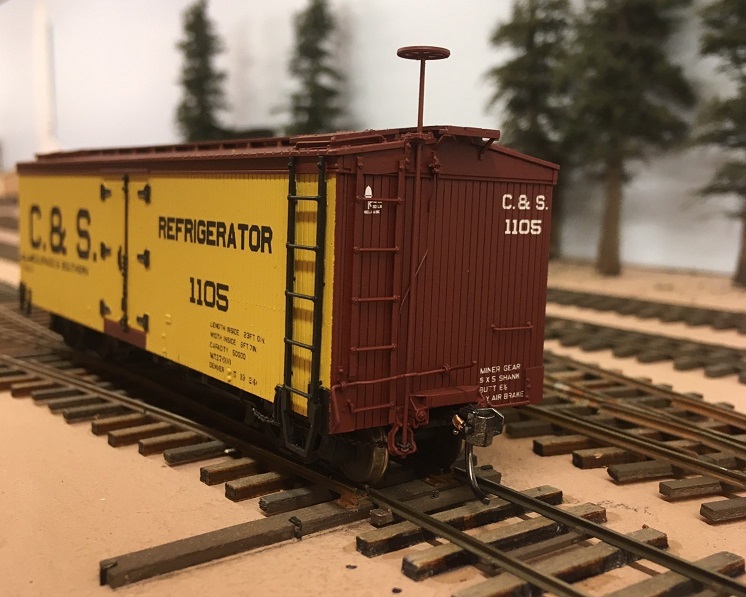 I've always wanted a C&S reefer in the block lettering scheme, just to understand how they looked. The reefers were lettered with the big C&S block monogram from their building in Jan/Feb 1909 until repainted in the modern "button" scheme about 1926-27. There are no good photos of these cars from that era. If you can believe it, this enlargement of a McClure photo, that Doug Heitkamp posted, is probably the best: 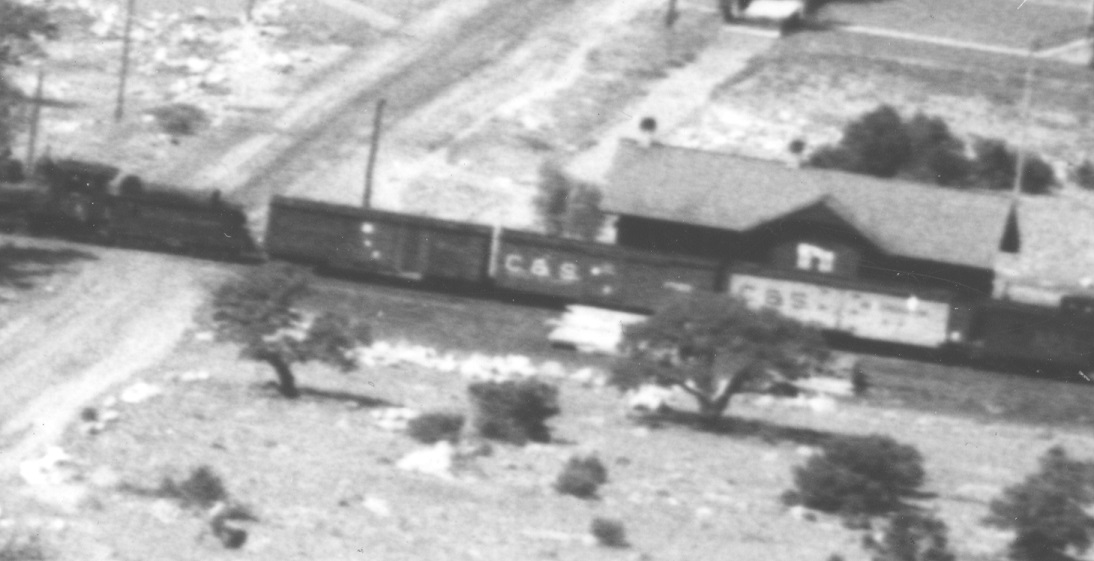 One of many of McClure's Buena Vista portraits, the photo dates prior to USSA appliances in 1915-16. Flaws in the negative create white spots right over the car number -- we can't tell if it is a 3-digit or 4-digit number, much less the number itself. The only other photo with a hint of information is this view at Romley from about 1918: 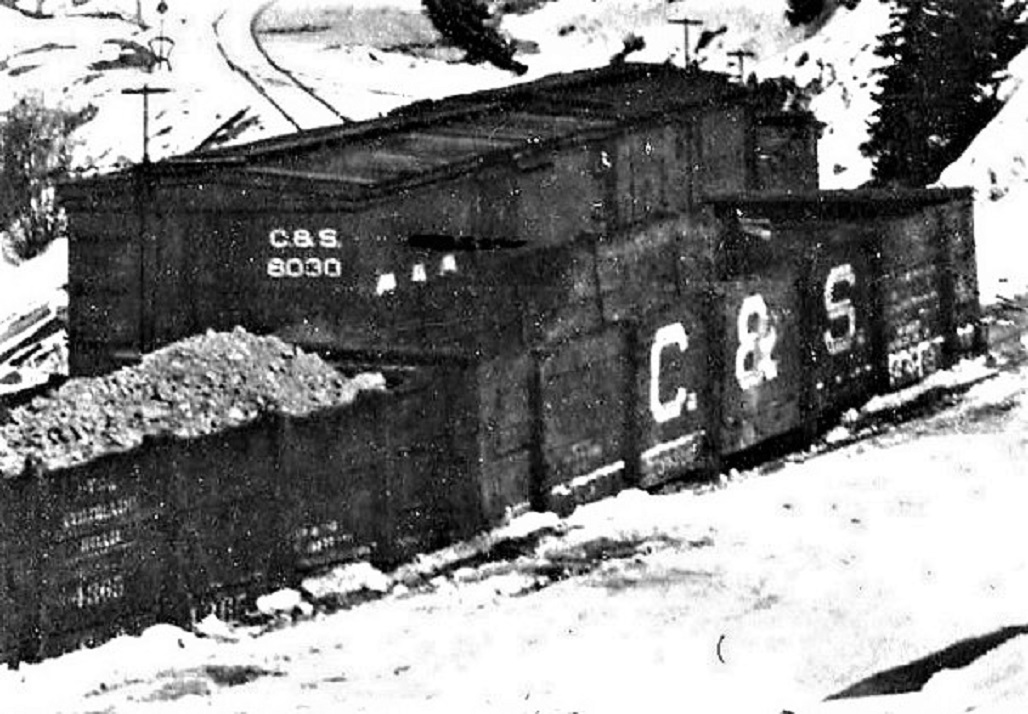 The SUF reefer in the back ground is mostly obscured, but we can tell that the word "Refrigerator" survived on the paint scheme after the USSA appliances (there has been some controversy about this). That's it. If you know of a clear photo of a SUF reefer in the block lettering scheme, please post it. I built this Sn3 model of a SUF reefer about 12 years ago, from an Overland kit. I completed the car but never painted it. Why? Lack of time is one excuse, but mainly because the only set of black lettering for the block monogram scheme in all three scales, is the CDS Lettering Ltd dry transfer set No. 241. I am allergic to dry transfers. I hate the damn things. I can never get the lettering exactly where I want it, much less make the lettering line up straight along the length of the car. You only get one shot, I can't float it around like a decal, measuring and remeasuring until it is in the correct position. Then about 3 years ago, I saw an eBay ad for two complete sets of "Thinfilm" decals in S scale for the block lettering in black. I never knew there was such an animal! I haven't found such lettering listed in any Thinfilm price list going back to the 1980's. I was able to talk to one of the owners of Thinfilm at their table at the NNGC in Denver in 2018. He told me these were a custom printing for an individual many years ago; he didn't remember who did the art work. Of course I purchased the decals. They are exquisite--judge for yourself: 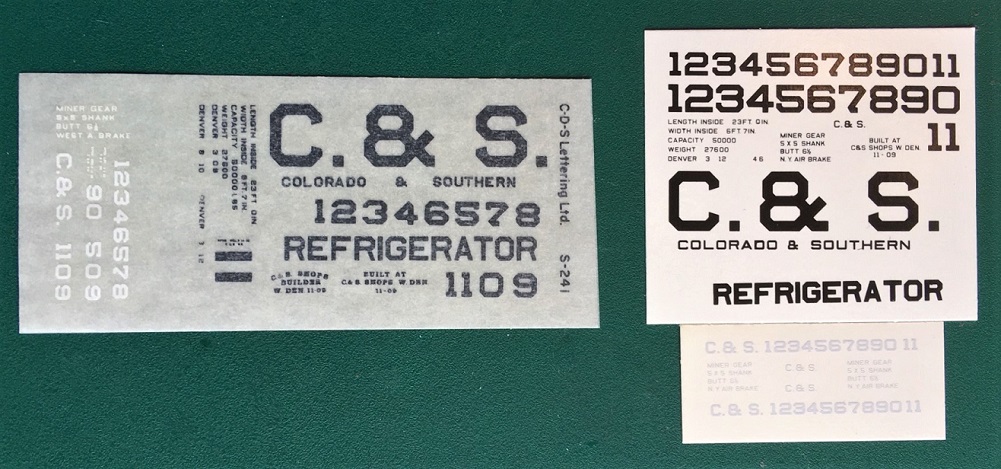 The Thinfilm decal set (right) has the word "Refrigerator" slightly smaller than the CDS set. The big "C&S" measures the same in both, but the Thinfilm set has the "tail" of the ampersand correctly drawn. The "Colorado & Southern" subscript is printed in the correct extended block Gothic font in the Thinfilm set--the CDS set is in plain Gothic. The dimensional data for the sides and ends are rendered much finer in the Thinfilm set. With my retirement, I got on with finishing the reefer. I wanted a medium yellow for the sides; I learned the hard way that chrome yellows, like Floquil/Polyscale "reefer yellow" can look great under incandescent lights, but take on a greenish cast under my high CRI fluorescent train room lights. I finally settled on PBL's Star Brand paint, "RGS Depot Yellow". Star paints are lacquer enamels, they require their own thinner and retarder for air brushing; when cured they have a durable, hard finish. Two light coats were airbrushed on the sides, then put aside to cure for a couple of weeks. But what about the other colors, and how was the side hardware painted? Darrel Poole, back in a 2014 post on the main blog, opined that the side hardware was likely freight car red, matching the roof and ends. You can read Darrell's reasoning here: http://coloradosouthern.blogspot.com/2014/02/1927-reefers-not-what-you-expected.html. To me, the side hardware looks black in all the photos. I tried to research CB&Q/C&S/FW&D standard gauge wood sided reefer painting practices of the 1920's. Protocraft has a decal line catering to Proto:48 folks and carry decal sets for CB&Q and FW&D reefers. They state: Sides were painted yellow with a touch of red in it; ends, fascia board, toe kick and roof were painted freight car red, with underbody coated in black car cement. Apparently, all side hardware was black, while end hardware was freight car red, like the end sheathing: 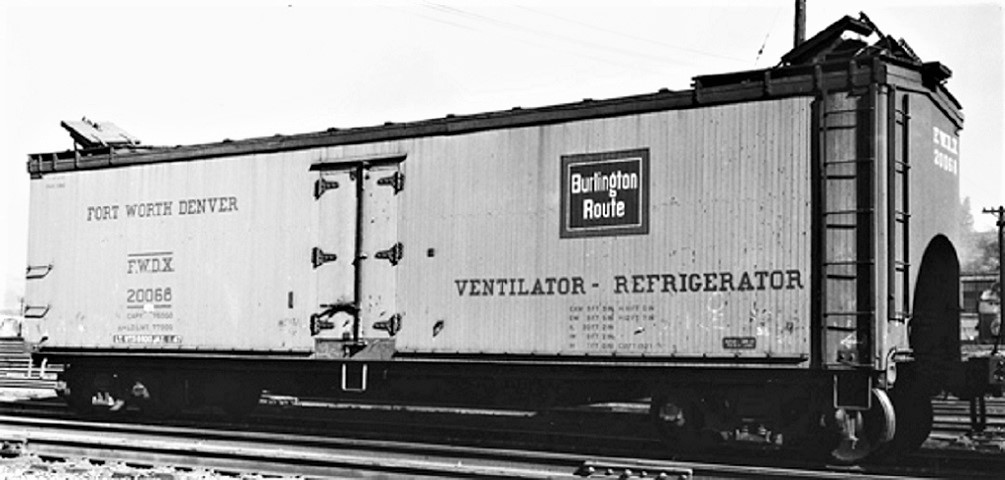 The C&S had 200 identical cars, numbered 50050-50249. So I went with this color scheme. I first masked off and airbrushed the underframe Polyscale "Grimy Black"; the Bettendorf truck side-frames and bolsters got the same color. Wheel sets were painted "Roof Brown" in Banta laser-cut tread masks. With more masking, the roof, the ends and small section under the doors was airbrushed with my standard C&S freight car red, Polyscale "Rock Island Maroon". Before putting the airbrush away, I painted the ladder / stirrup for the right end of the car side "Engine Black". After an afternoon of carefully removing masking tape, I saw that it was good--no paint bleeds under the tape (thanks Tamiya!). I spent a couple of afternoons with my surgical loops and a 10-0 spotting brush painting the metal side hardware with thinned Polyscale "Engine Black": Door hinges, latches, handles, the sides of the lower corner irons, as well as the left end side grab iron and stirrup. The Star brand yellow base coat was a good choice: If I "colored outside the lines", I could use my skinny fiberglass eraser to gently scrape off the wayward black without getting into the yellow paint. When I thought I couldn't make things look better, I made myself stop. After two light coats of Testors "Gloss Cote", it was time to use that beautiful decal set. But where to put each piece of lettering? Years ago I purchased a set of drawings from John Maxwell, listed as "Standard Paint and Lettering Diagram for C&S Reefers". But comparisons with the few available photos showed more and more inconsistencies. I've decided that Maxwell's lettering plans are another of those mysterious C&S documents that are inconsistent with observed reality, kinda like the caboose folio sheets in the "Caboose that never was" thread. Instead, I tried to decipher lettering position from the ghost lettering on heavily weathered reefers, as photographed in the late 1930's: 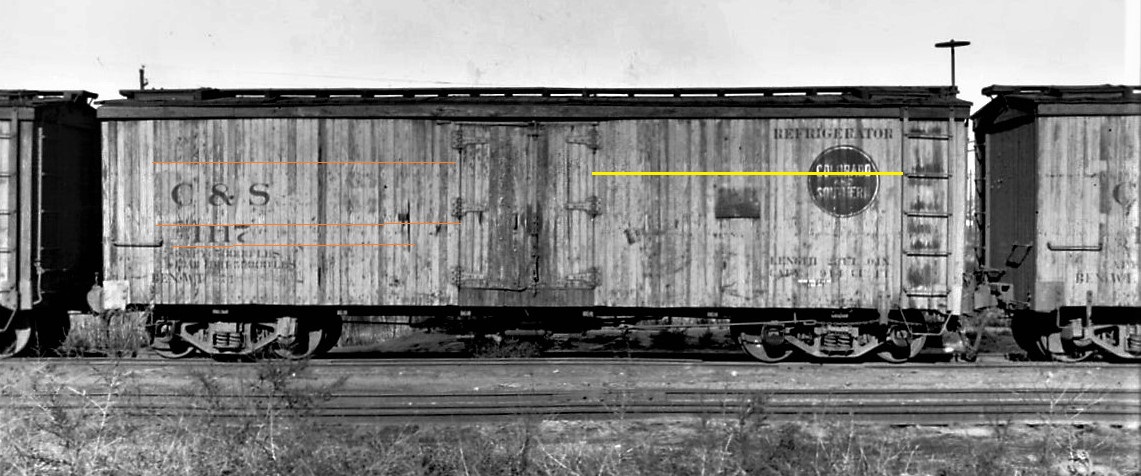 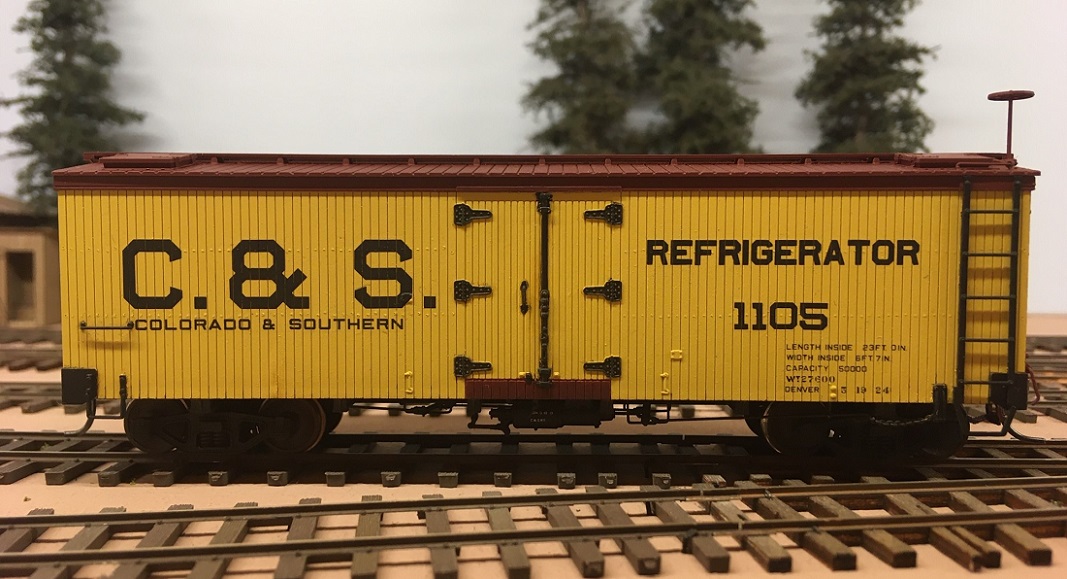 The word "refrigerator" has a horizontal center line halfway between the upper and middle hinges. The C&S monogram and subscript has an upper edge that is the same distance below the fascia as the top of the word "Refrigerator". The lower edge of the subscript is even with the bottom of the left grab iron. I centered and located the car number so the bottom edge matched the bottom edge of the subscript on the left, for a sense of symmetry. I did use the Maxwell drawings to locate the side and end dimensional data and the end reporting marks. The retainer instruction is from a San Juan stock car set. For more precise location, I did a proportional calculation from the great photo that Doug Heitkamp posted, of badly deteriorating RGS 2101: 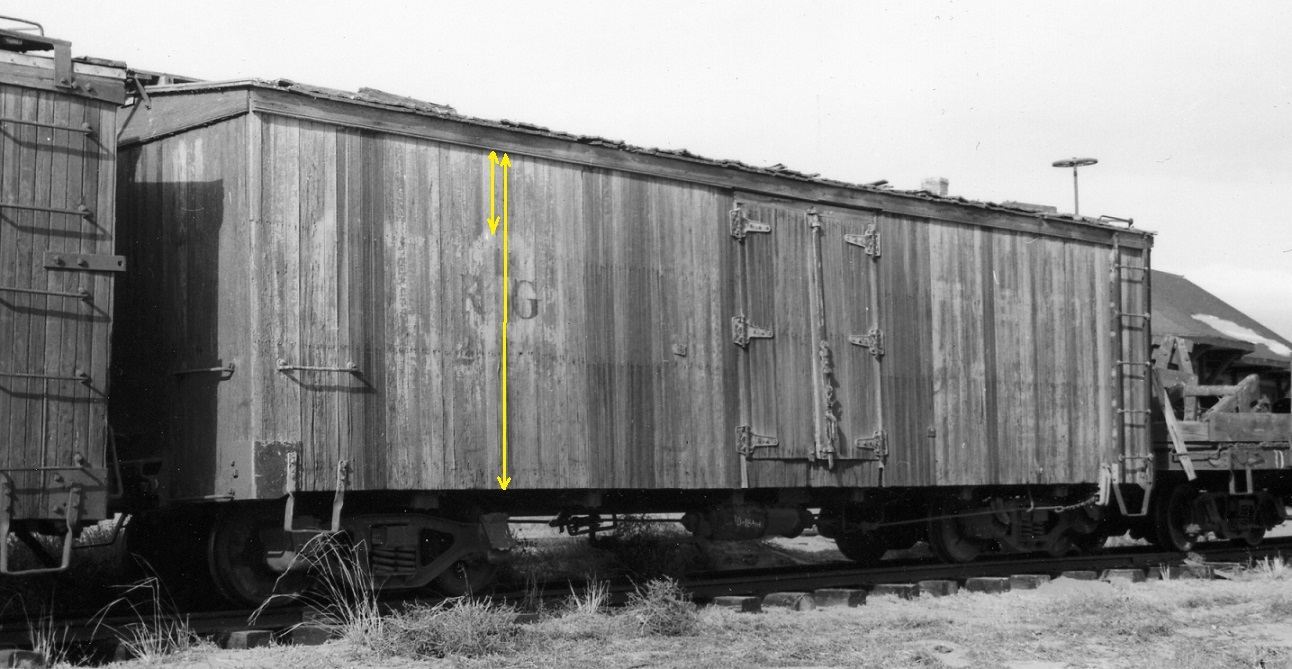 FWIW, from my calculations the top edge of the "C&S" monogram and the word "refrigerator" are both 18 scale inches below the bottom of the fascia, while the bottom edges of the "Colorado & Southern" subscript and car number are 26" scale inches above the bottom of the side sheathing. The decals applied easily without flaking or tearing. With 3-4 applications of "Solvaset" the film was barely visible and disappeared altogether with an over coat of first Gloss Cote, and then Dull Cote. Although the car needs some weathering, I pronounce the car "done" for now. I did put a new 2" Roman lettering weight of 27,600 lbs with a weight date of "5-19-24", just a few weeks before my planned era of mid June, 1924. So perhaps this is the last SUF reefer to be completely re-shopped and repainted in the block scheme, on the eve of all the other reefers being repainted in the "modern" scheme with the button herald. I will probably save my other "Thinfilm" decal set for a brand-spanking-new SUF reefer, as built, for my 1909 roster. To see how they looked then, read Derrell Poole's Blog article from 2014: http://coloradosouthern.blogspot.com/2014/02/c-refrigerator-cars-part-four.html Derrell is very proficient in applying dry transfers, so it is a skill set that can be learned! If anyone knows who did the art work for the Thinfilm decals shown above, or if you have a set or two that you'd be willing to sell, I'd like to do another car like my reefer 1105 for my 1924 roster, and at least two for 1909. C&S reefers, like whooping cranes and Hostess Twinkies, seemed to always travel in pairs . . . P.S. Here is the Colorado Railroad Museums take on the block lettering on SUF reefers: 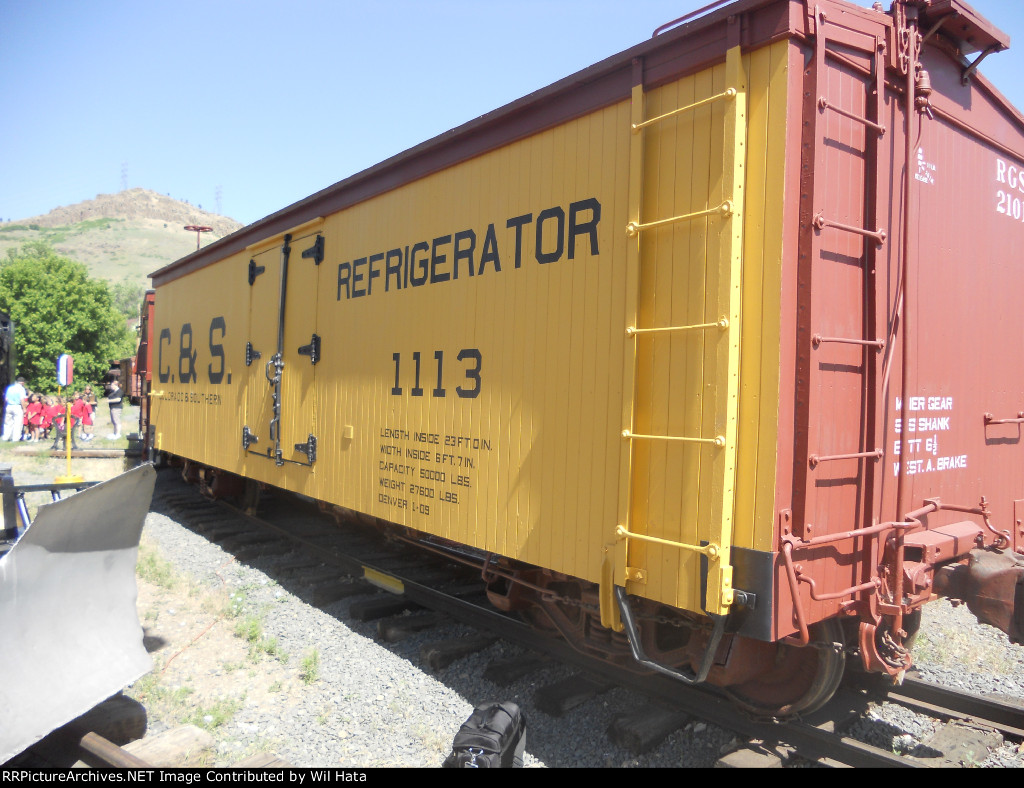
Jim Courtney
Poulsbo, WA |
Re: Building a 1924 Roster in C&Sn3
|
In reply to this post by Jim Courtney
Hi Jim --
Speaking as a guy who's laboring to assemble ONE period-specific roster, I have to say I'm greatly impressed by your ambition to build three! Your reefer is a beautiful start, and I'll look forward to following your progress. And I wish I could do as neat a job as you have on hand painting the black hardware. Might be your surgical skill applied to a different problem, but I'm quite envious! Best of luck in your retirement, Geoff Hamway |
Re: Building a 1924 Roster in C&Sn3
|
This post was updated on .
Thanks Geoff!
Both you and I know that you are no slouch at building beautiful period narrow gauge models. I'm not sure my plan for three rosters is ambitious or even wise -- I'm just indecisive. With all the information and photos shared here over the last 7 years, I find that I tend to want to build a model of whatever new C&S thing captures my fancy. At least I've narrowed my criteria down a bit. No Como spark arrestors, nor Mason Bogies with Congdon stacks (tho' those are pretty cool, too). In thinking about reefers, especially since Keith posted the photo of the D&RG "Raspberry Julep" reefer, I don't recall ever seeing a model of a D&RG reefer prior to the 1924-26 rebuilds. Have you built one for your first decade Telluride layout? If so, were they red with white lettering? If you have built one, please post a photo. This goes for Pat Student as well. I still need some D&RG(W) cars for for interchange in all three eras. And if anyone else has built a C&S SUF reefer with block lettering (any scale) I'd love to see your interpretation.
Jim Courtney
Poulsbo, WA |
Re: Building a 1924 Roster in C&Sn3: Refurbishing Old Stuff
|
This post was updated on .
CONTENTS DELETED
The author has deleted this message.
Jim Courtney
Poulsbo, WA |
Re: Building a 1924 Roster in C&Sn3
|
In reply to this post by Jim Courtney
Jim,
The Rio Grande had more colorful reefers earlier and later, but in the first two decades of the 20th century their rolling stock fleet was a sea of red: red reefers, red stock cars, red box cars, gons, flats and MOW equipment. For wild variety, the cabooses and passenger equipment were different shades of red. On the RGS, even the buildings were mostly red then! FWIW, although I say I model 1905, I no longer even feel guilty when I transgress. The familiar class 4r 30' reefers you mentioned are a case in point. They weren't delivered until 1908, but I like them and so I do have a couple of them. The one below was kitbashed from a PBL kit, with a new roof, changes to safety appliances and probably other changes I've forgotten. CDS has (had?) lettering for this car, but not the block style that I wanted, so this has a custom set. You'll notice (ahem) that I have not yet gotten around to painting the hardware black! Geoff 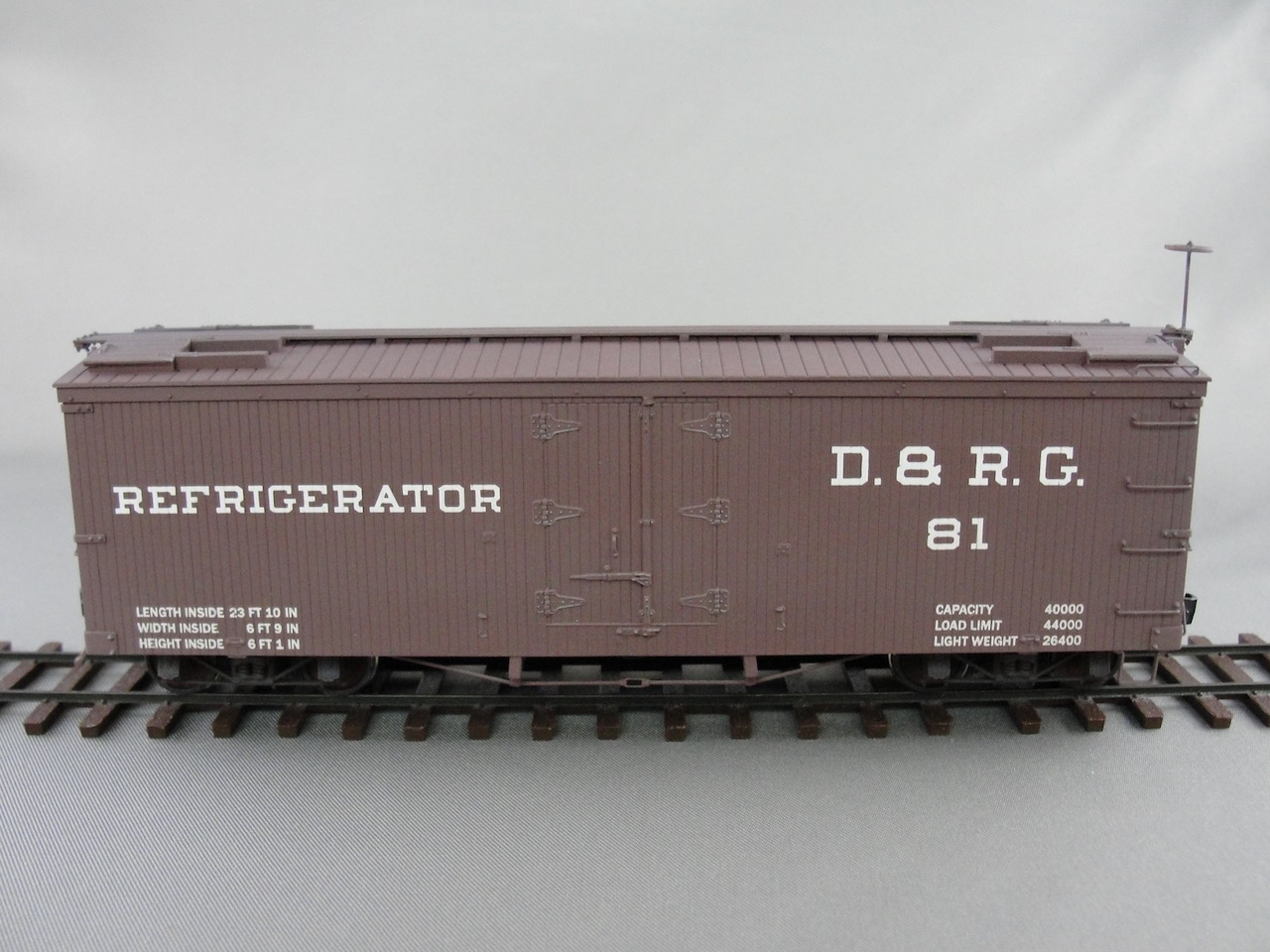
|
Re: Building a 1924 Roster in C&Sn3
|
This post was updated on .
Beautiful model, Geoff!
I've noticed on the first decade freight car photos that you've posted, that the cars are painted a brown, rather than the later D&RGW freight car red. Does this represent the so-called D&RG "Princess Mineral Brown"? When did the D&RG change to the freight car red color? What paint did you use for your freight cars and who did the custom printing? I figure that with the winter blizzards and spring washouts over Boreas Pass, from time to time Breckenridge and Dillon faced beer supply crises. I have imagined that the "Beer Depot" in Leadville had to use a D&RG reefer on occasion to dispatch emergency beer to those locations, so I might need a D&RG reefer for beer relief. I have a Leadville Shops short 24' reefer kit with CDS lettering for a 1901 model, and am considering a class 3r reefer for 1909. I figure by 1924, when beer shortages arose, they borrowed South Park's TT truck and just drove it over Fremont Pass. 
Jim Courtney
Poulsbo, WA |
Re: Building a 1924 Roster in C&Sn3
|
Jim,
Bob Sloan says that the change from mineral brown to freight car red took place "around 1920." That modern stuff is outside my blindered hobby focus, but Pat Student or Bob Stears could probably give you better info. I honestly can't tell you what paint I used on #81, but for my 3r #113 I used a mix of long-gone Floquil Southern Freight Car Brown and Roof Brown. More recently I've been using Tamiya Red-Brown mixed with Tamiya Red. 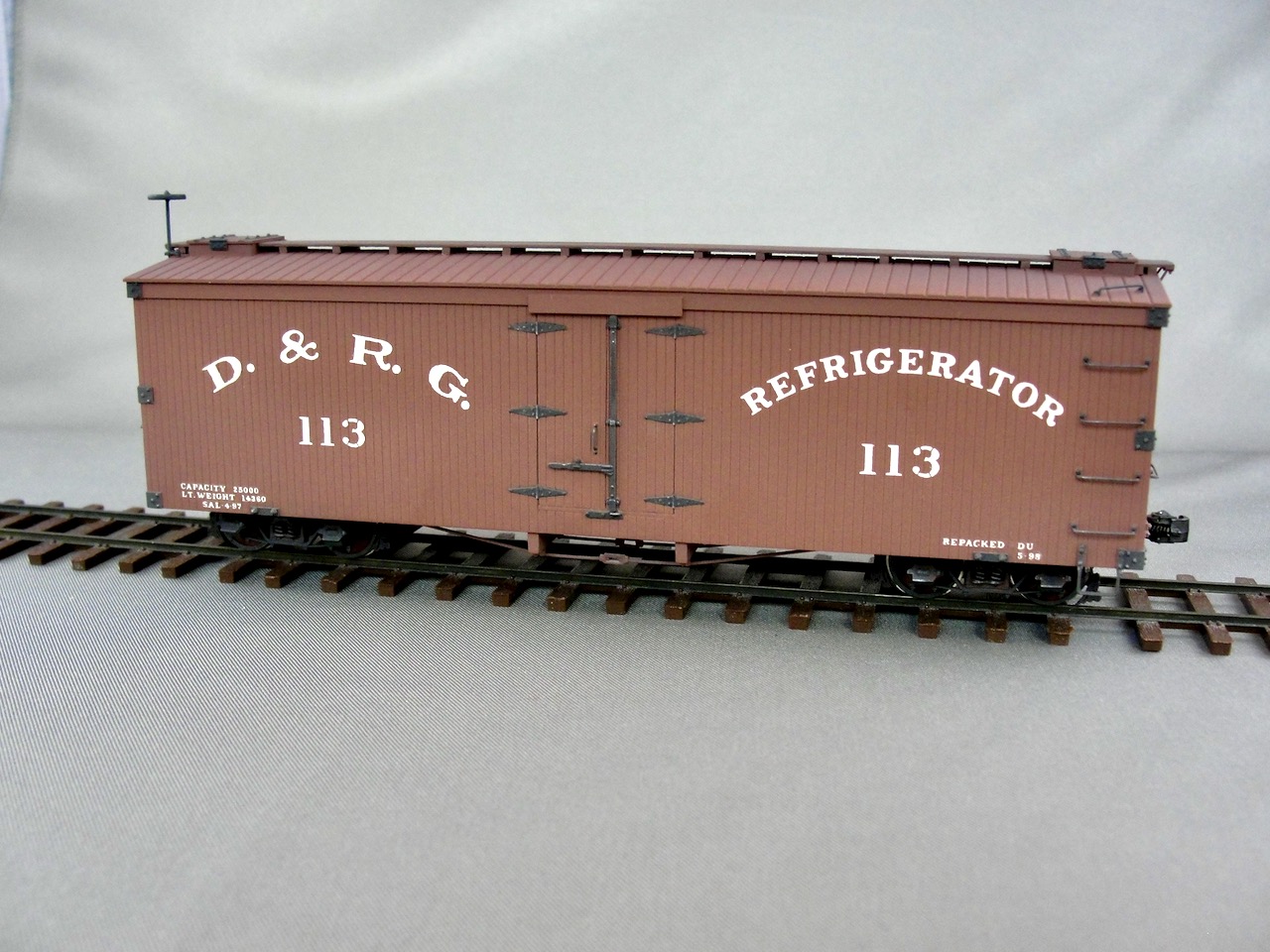 The decal artwork for #81 was done about ten years ago by a friend and printed by Rail Graphics. If I were doing it today, I'd use Stan Cedarleaf or Bill Meredith for artwork and printing. I do still have a set of the block reefer lettering if you want it. It's past its "sell by" date, but hasn't actually crumbled to dust yet, so is probably useable and I don't need it. FWIW, I started to get interested in operations a few years ago, and after looking at traffic volumes, train sheets, etc. for my period, realized I needed to join "Reefers Anonymous" immediately! Geoff |
Re: Building a 1924 Roster in C&Sn3
|
Now that's a beautiful, if D&RG, reefer.
All it needs is a "Raspberry Julep" banner with "This car to Telluride . . ." Did you scratch build this particular car? Is it 30 or 32 feet? Love the ice hatches interrupting teh running boards. And you got the hardware all painted black. Remember when Grandt Line parts (hinges, reefer latches) were cast in black plastic--sure made things a lot easier!
Jim Courtney
Poulsbo, WA |
|
In reply to this post by Jim Courtney
Jim,
Beautiful models! I'm envious. Just for completeness and since you asked for other interpretations, I took a snap of a couple of the Kadee/MicroTrains HOn3 reefers from 10-12 years ago. I wish they had kept doing more C&S cars as these are really nice Ready to Run items in HOn3, but their lettering seems a bit off. I wonder where they did their research for the lettering? The "Refrigerator" and all the other lettering is quite a bit higher than your measurements. It almost looks like they used the CRRM car as a prototype but even so... So these are not quite right, but for the record, here is what MicroTrains did. Skip Egdorf Los Alamos, NM 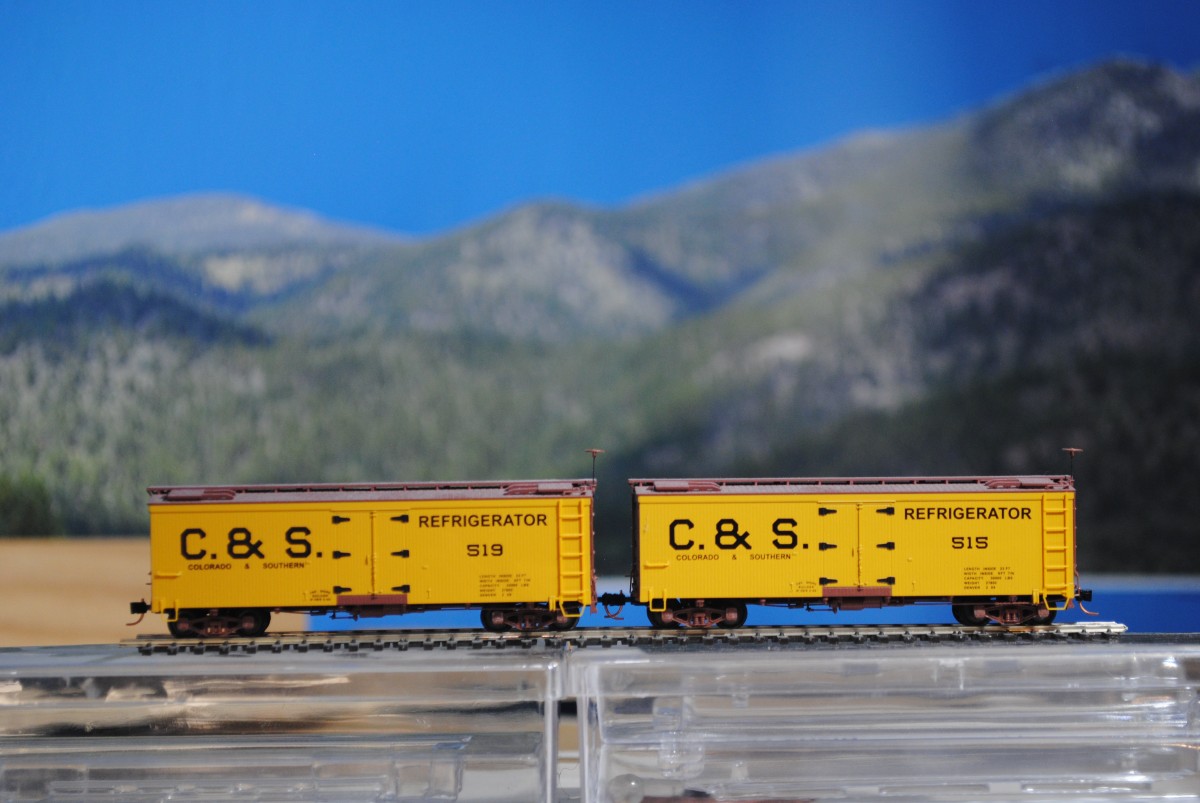
Skip Egdorf
|
Re: Building a 1924 Roster in C&Sn3
|
Hi Skip,
I don't know where manufacturers get their info, or rather said, don't get info. The C&S block monogram scheme on the reefers is an information vacuum, there are no good photos of these cars over their 16-17 years in this scheme. There is no credible official C&S documentation of the reefer lettering. Perhaps they just made their best guess. The John Maxwell official lettering diagram is highly suspect, as no where does the word "Refrigerator" appear. The numbering on those diagrams were 3-digit 500 series numbers, implying that was the builder's lettering schemes as they left the C&S shops in the winter of 1909. Yet, this McClure photo of Buena Vista caught another SUF reefer: 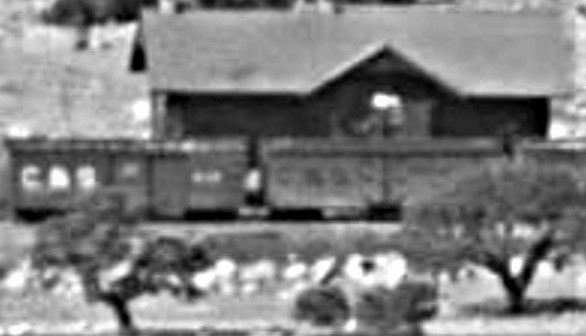 https://digital.denverlibrary.org/digital/collection/p15330coll22/id/1470/rec/15 We can't tell whether this is pre or post-1912 from the number (this time hidden by a tree), but for once in his career McClure inscribed a date on the bottom of his negative, "copyright 1911". So this is on or before the year 1911, a year before the 1912 C&S renumbering to the 1100 series. This has to be the original lettering, only 2 years or less after building. The word "Refrigerator" is probably there on the right side of the car side, about where I located it. It was still there in 1917, and the ghost of that lettering is still there in the late 1930's photos. As I said, I've always wanted a model of this car in this lettering scheme, so I could make my best guess as to how they looked, based on the sparse information available. Now watch, Todd Hackett will probably post a beautiful hi-res scan of a block lettered reefer to settle things once and for all. 
Jim Courtney
Poulsbo, WA |
Re: Building a 1924 Roster in C&Sn3
|
Wow, some fantastic looking reefers there, guys.
While my 1109 is getting on toward needing a complete respray, it was deemed “good enough” when the renumber happened so it just go a bit of fresh yellow over the 559 and a newly-stenciled 1109. 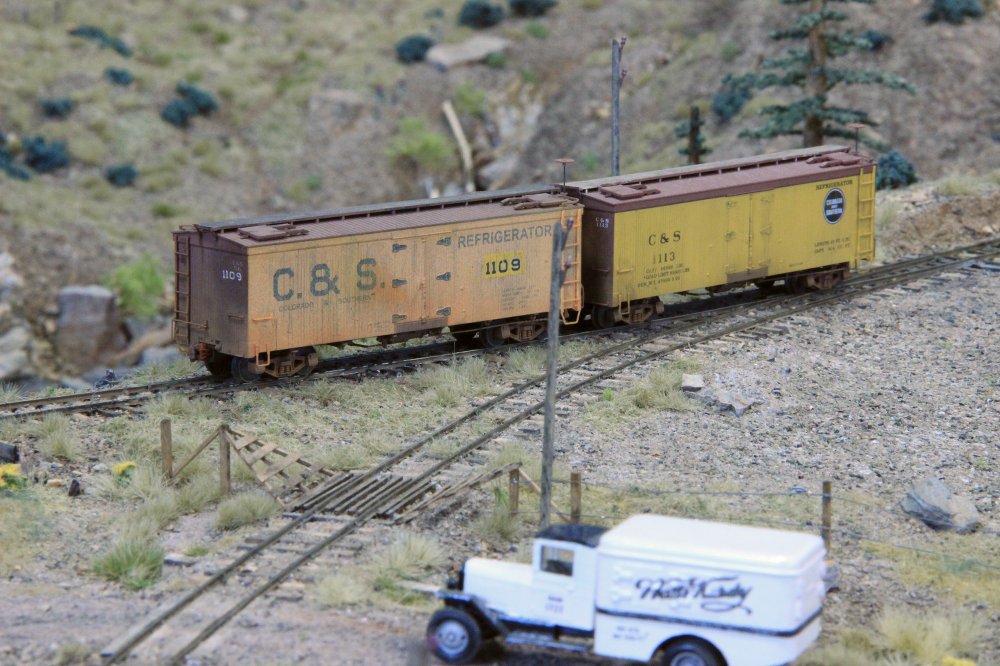 |
Re: Building a 1924 Roster in C&Sn3
|
In reply to this post by Geoff Hamway
Geoff
When the D&RG started using "freight car mineral red" is very much of interest to me as I, like Jim, am concentrating on a 1924 roster. What color should the cars yet to be rebuilt in the 20's be? This would be about half of the 3000 series box cars, all the 5500 stock cars, 700 and 800 series drop bottom goes, and the 9200 gondolas. The 1000 and 1500 series goes, 3000 series box cars, and 5500 series stock cars were delivered painted with Prince's Mineral Brown paint. Color is similar to dark chocolate. Several things make me believe that freight car paint was changed to "freight car mineral red" in the early teens. First is a photo first brought to out attention by Chris Walker of D&RG 1271 taken around 1911before application of standard safety appliances and moving the bottom dump operating rod up to level of the deck. Even in black and white, the paint appears to be too light of grey to be painted in "Prince's Mineral Brown". 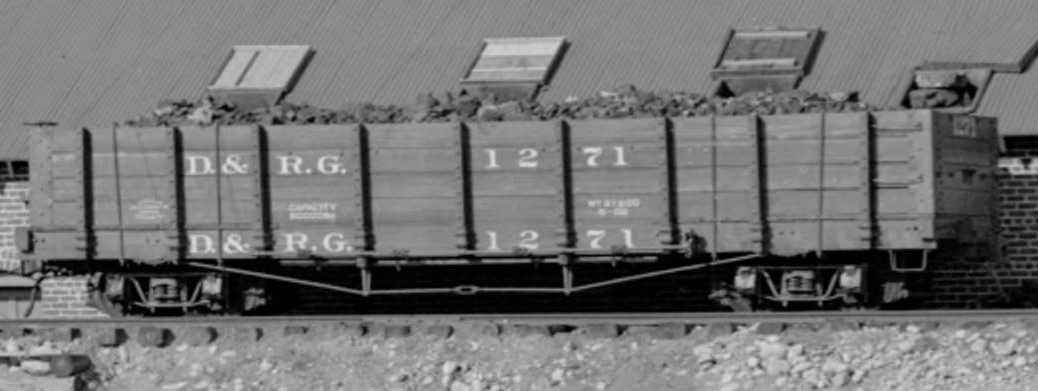 Compared to D&RG 1546 which appears darker and likely is still painted in Prince's Mineral Brown.  Second, a D&RGW document on the 5500 series stock cars in 1927 gives average labor and material costs for 1910 - 1914. For paint it lists 23 1/2 Gallons Red Paint. Third, locomotive lettering paint was changed from aluminum leaf to "The Sherwin Williams Co. D&RG Std. Loco Lettering Color" in 1911 / 1912 based on several broad gage locomotive drawings. Reefers were an exception. The reefers, 82 - 99, 107 - 119 with gaps to 149, were built in 1898 and 1900 were 32', 20 ton cars which your models are excellent examples. All pictures I've seen have white lettering with what would be box / freight car red. The "short" reefers, 32 - 81 were 30' 20 cars. As built painting was Achmechrome yellow sides, Prince's Mineral Brown roof an ends, and black letters and figures. Pat |
Re: Building a 1924 Roster in C&Sn3
|
This post was updated on .
Good information, Pat.
What would you recommend as paint choices for Princes's Mineral Brown and the subsequent freight car red for the teens and early twenties? One misconception I've had is that in 1924, any number of 3000 boxcars and various high side gons would have been completed in the 1924-1926 rebuilding program. Back when I built some 3000 series boxcars in HOn3 and Sn3, I remember placing those little decals: NEW ROOF ALA 1924 In Stan Rhine's High Side Gondola Book published last year, there is a table chronicling the rebuilding of the D&RGW freight car fleet, Table 13, on page 108. The only freight cars actually completed in calendar year 1924 were 7 high side gons (1000 series in January, 1924, and 10 odd flats, stock, high side gons (9200 series) in December, 1924. Many of the 3000 series boxcars may have indeed had new metal roofs applied in 1924, but the first batch of boxcars didn't leave Alamosa until the following year--61 cars in January 1925, 252 cars completed in March 1925. So, for a guy modeling June 1924, all D&RGW interchange cars would likely be in their pre-rebuild state with the big "D&RG" lettering with "W" often added, right?? Great info being shared here, thanks Geoff and Pat.
Jim Courtney
Poulsbo, WA |
Re: Building a 1924 Roster in C&Sn3
|
In reply to this post by Jim Courtney
Sorry, I can't find any reefers with block lettering in my collection. I could try to fake something by merging a model photo with an historic photo, but that probably won't help. I even looked in the C&N/DB&W folder because 515 and 519 were leased to the C&N in March, 1909 (later leased by Colorado Packing & Provision in June) to transport and store perishable provisions for the crews working on the dam in Nederland and the power plant in Boulder Canyon. They were returned to C&S in July, so they weren't on the line long, and I haven't been able to locate photos of them. I think I read that somewhere that one was often spotted in Orodel as meat storage for people working on the pipeline and power plant, but the only photo of that site during that period in my collection only shows two C&N gons. |
Re: Building a 1924 Roster in C&Sn3
|
This post was updated on .
In reply to this post by Jim Courtney
Jim
P-B-L's Star Brand STR-18 D&RGW Mineral Red for Prince's Mineral Brown, STR-14 D&RGW Faded Box Car Red , though I add a few to several drops of STR-01 D&RGW Freight Car Red to each spray mix so that every cars does mot have the same exposure history. These are lacquer based paints that I now prefer over Floquil or Scalecoat. Drying time is in minutes. Some additional D&RGW rebuilds not in Stan's table, Information based on D&RGW Mechanical Department Completion Reports. 3000 Series 12 Completed June 1922 4000 Series 29 Completed in July 1923 3000 Series 23 Completed September 1923 3000 Series 20 Completed December 1923 700 Series 99 Completed September 1926 800 Series 99 Completed October 1926 For 1924 3000 Series 80 Cars Completed June 1500 Series 135 Cars Completed November 1500 Series 122 Cars. Completed December The following photo is from 1923 at Alamosa. Box car 3255 does not have 'W' added to the reporting marks and 1464 was released still as a 4 board, 40" sides though it will be rebuilt in 1925 with 5 board, 50" sides. 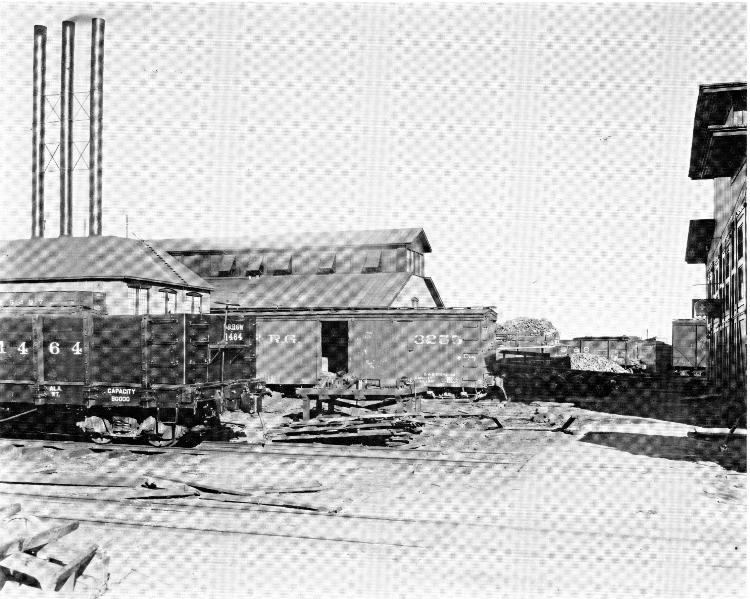 To back date a P-B-L 3000 series with Economy doors, the sides need to be heightened, Evergreen Styrene HO 4 X 4 and a 1x4 were used with 0.020 scribed roof. Also, the running board needs to be replaced. Instead of 3 equal-width boards, they had 2 2x6 outers and a 2 x 10 center board. 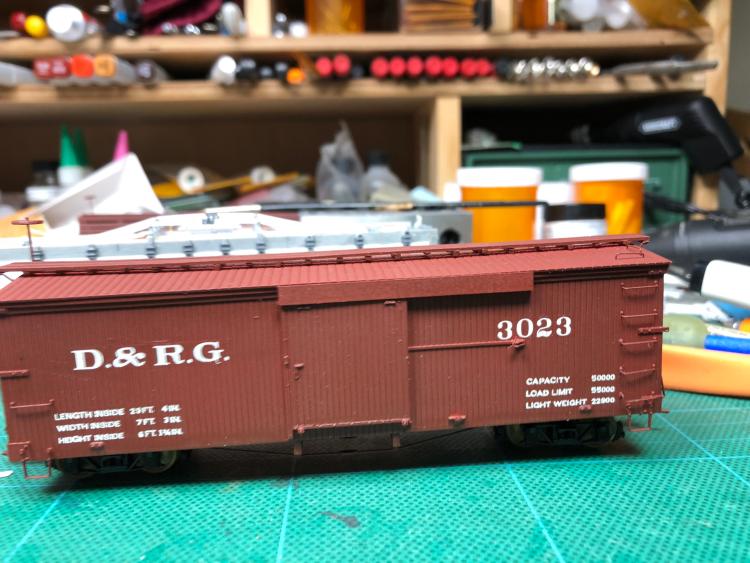 Pat |
Re: Building a 1924 Roster in C&Sn3
|
In reply to this post by Pat Student
Thanks, Pat. I appreciate the additional info, especially the date for the changeover from aluminum leaf on the locos, which I had not heard before.
But I think there must be a mix-up on the as-built colors for the 1908 short reefers (#32-81). There are a fair number of photos of these cars in their earlier years, and all that I have seen show them in red/brown paint with white lettering. In addition to the familiar Lively photo of #43 in Grandt's NG Pictorial v.IV (pg.10) and Virden's photo of #35 in Dorman's "The Southern" (pg.94), there's this photo of #81 that I bought from the Grandts some years ago:  There's also this photo from your modeling era of #58, which is particularly interesting to me because it shows the roof hatches clearly: 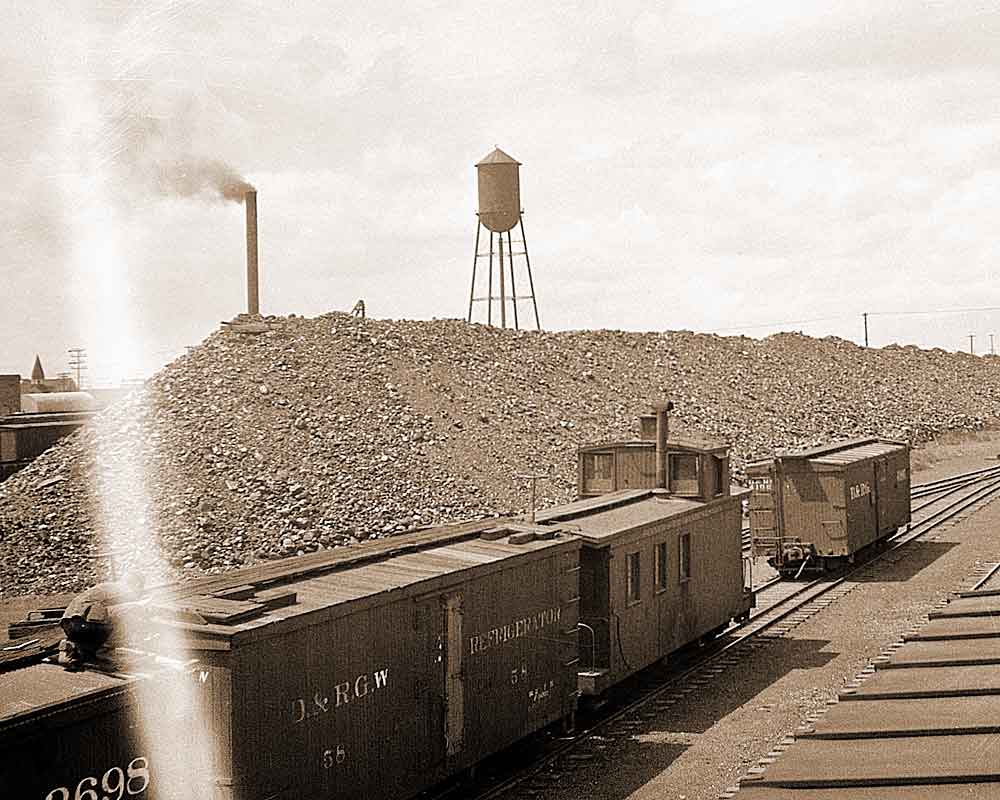 Is it possible that the later long reefers (#150-169) may have been the ones delivered in the paint scheme you describe? Thanks again, Geoff |
Re: Building a 1924 Roster in C&Sn3
|
This post was updated on .
Pat and Geoff, great info, I'm learning a lot here.
So, Pat, there would have been some 3000 series rebuilt boxcars in June, 1924! Adding up your totals for 1922 and 1923, 135 cars of the 3000 series had been rebuilt by June, 1924, about 18% of all the 3000 series boxcars. They would be painted and lettered like the Beam photo of 3303 in Grandt's book, with split dimensional data and no herald, right? But most of the 3000 fleet would look like this one in the Dorman Collection: https://ngtrainpics.photoshelter.com/gallery-image/RD054-D-RGW-Box-Cars/G0000LmzRZNNmxaI/I0000fLaZHnX6oY0/C0000Vd2qoA2MbNU 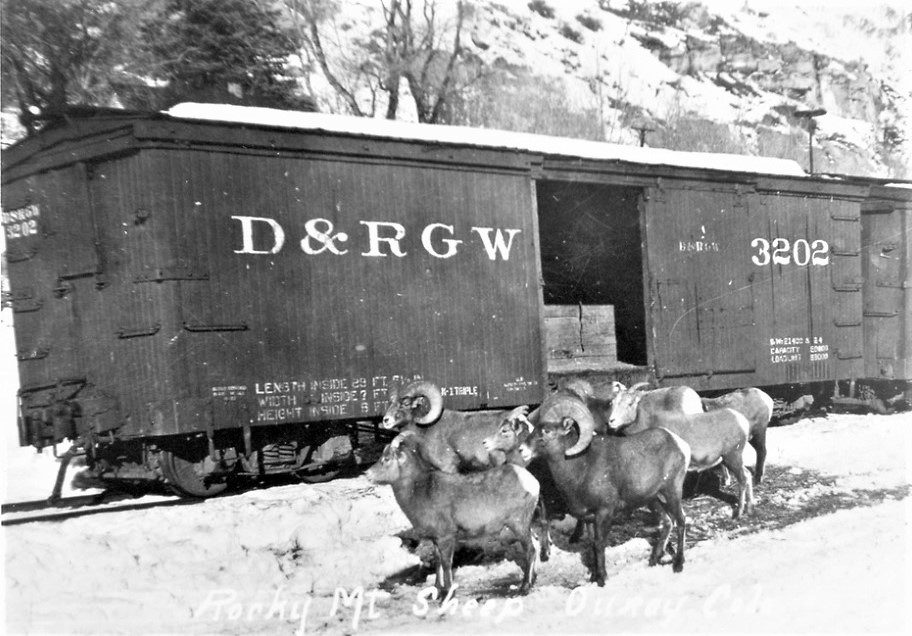 Others would have an extra "W" added to the original reporting marks, or the original "D&RG" reporting marks, never updated. Correct? As to the 1908 reefers being delivered with yellow sides, I've only seen photos of red cars with white lettering, like the two Lively photos: https://ngtrainpics.photoshelter.com/gallery-image/RD057-D-RGW-Short-Reefers/G0000F2PfbEROGJs/I0000nVkNxAc0VMo/C0000Vd2qoA2MbNU 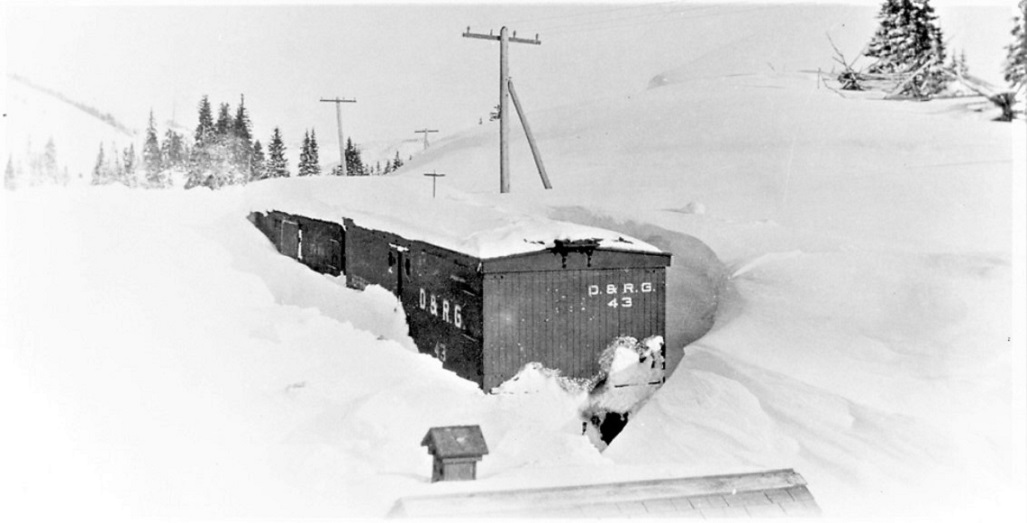 https://ngtrainpics.photoshelter.com/gallery-image/RD057-D-RGW-Short-Reefers/G0000F2PfbEROGJs/I0000SEO9XSwVM38/C0000Vd2qoA2MbNU 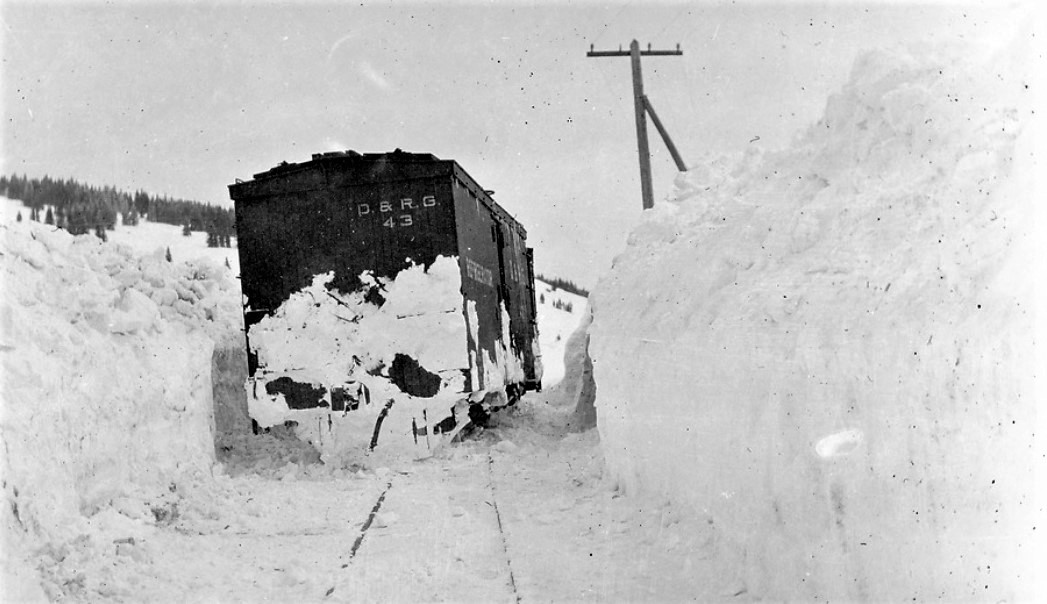 Since this car is only a year old, if it was delivered with yellow sides, the D&RG must not have liked them and repainted the cars fairly early. Geoff, that last photo of the 1921-1924 reefer is fantastic. I may have to consider adding one like that to my 1924 roster. Thanks.
Jim Courtney
Poulsbo, WA |
Re: Building a 1924 Roster in C&Sn3
|
Jim & Goeff
Thanks for the additional photos. The photo of D&RG 81 illustrates what I was describing as heightening the sides, compare the width of the facia to that of the the P-B-L 3000. Note the difference in the lettering styles between 81 and 58. The style on 81 matches that on the 1908 lettering drawing. Tried to post whole drawing, but file to large even when reduced. 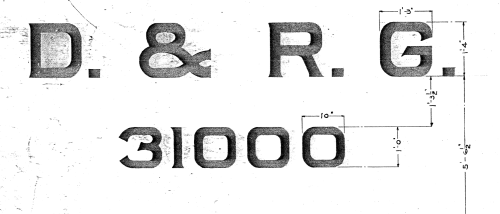  Looks like a new set of decals to make. Also, note 3202 lacks periods in the 1903 style reporting marks compared to 3255 in my earlier post. In addition it and the number on the side look like a fresh application. Likewise, I'm learning a lot from you. Pat |
Re: Building a 1924 Roster in C&Sn3
|
Pat,
I think I see what you're talking about regarding the fascia height. Both the short reefer and the 3000 series boxcars have fascias higher pre-rebuild than later after rebuilding. Does this suggest that both the 1903 boxcars and 1908 reefers were built with inside metal roofs, replaced with outside Murphy roofs at rebuilding? To me, the visible little bolt heads on the fascia of both suggest this, much like the C&S St Charles and 1907 C&S built boxcars, both contemporaries. And notice that 3202 has lost its outside door guards on the side door, but still has the outside guard on the end door. For another example: 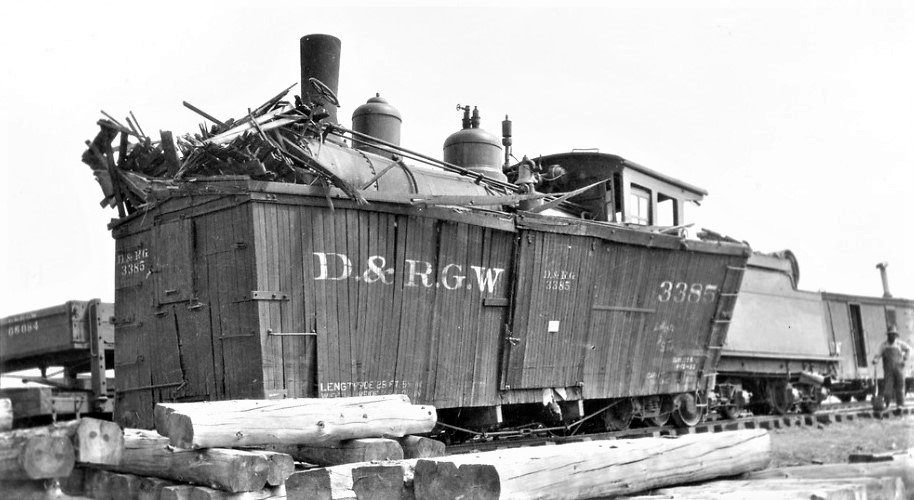 Disregard the locomotive lading. Box 3385 has lost the end door outside guard, but the side door guard is still in place. This appears to also be an example of the original "D&RG" slightly faded reporting marks with periods, addended with a much fresher "W" without punctuation. I'm only going to need a couple of D&RGW cars for my 1924 roster but, Pat, I may have to hit you up for purchasing some of your box car decals . . .
Jim Courtney
Poulsbo, WA |
«
Return to C&Sng Discussion Forum
|
1 view|%1 views
| Free forum by Nabble | Edit this page |

